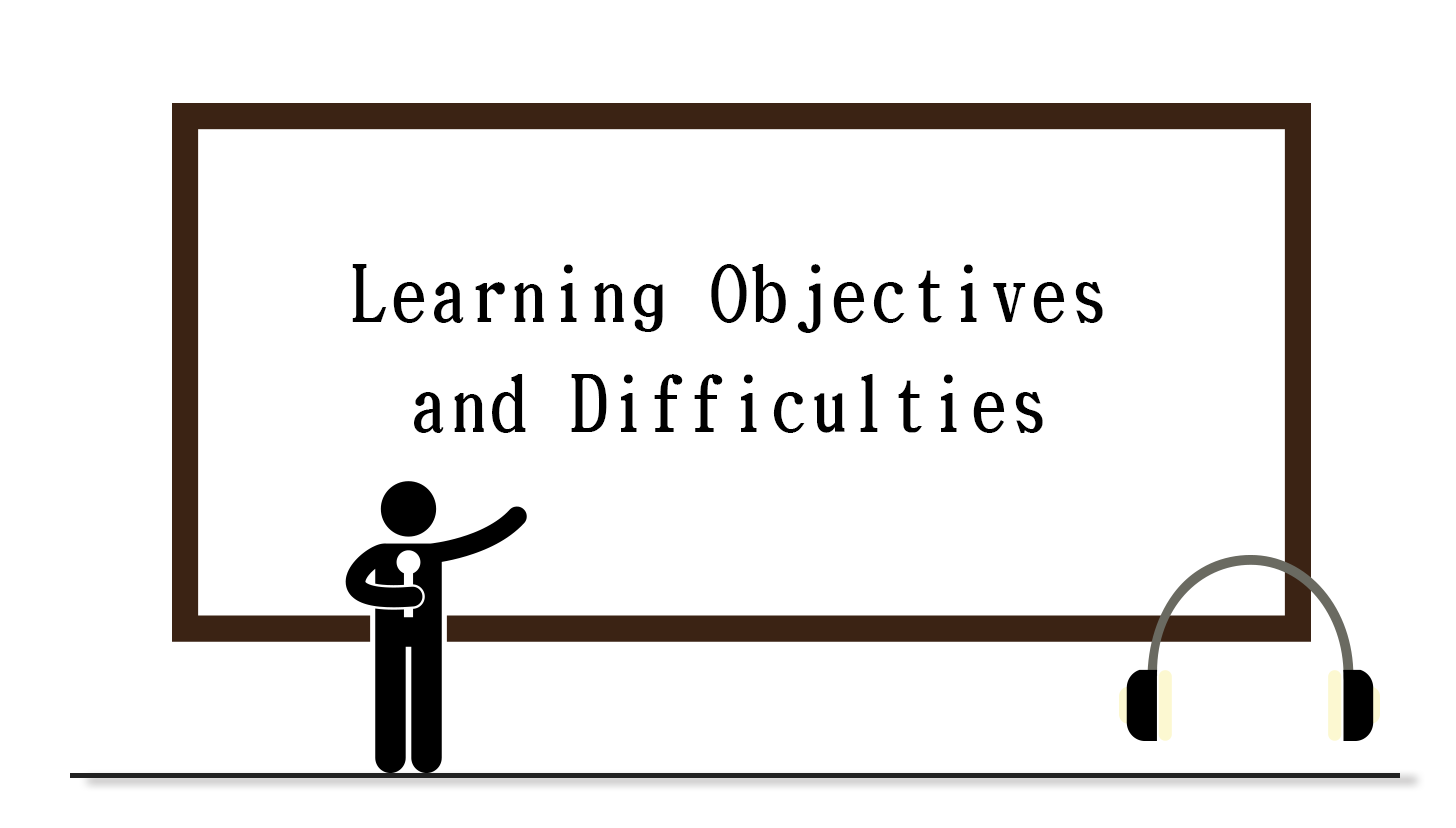
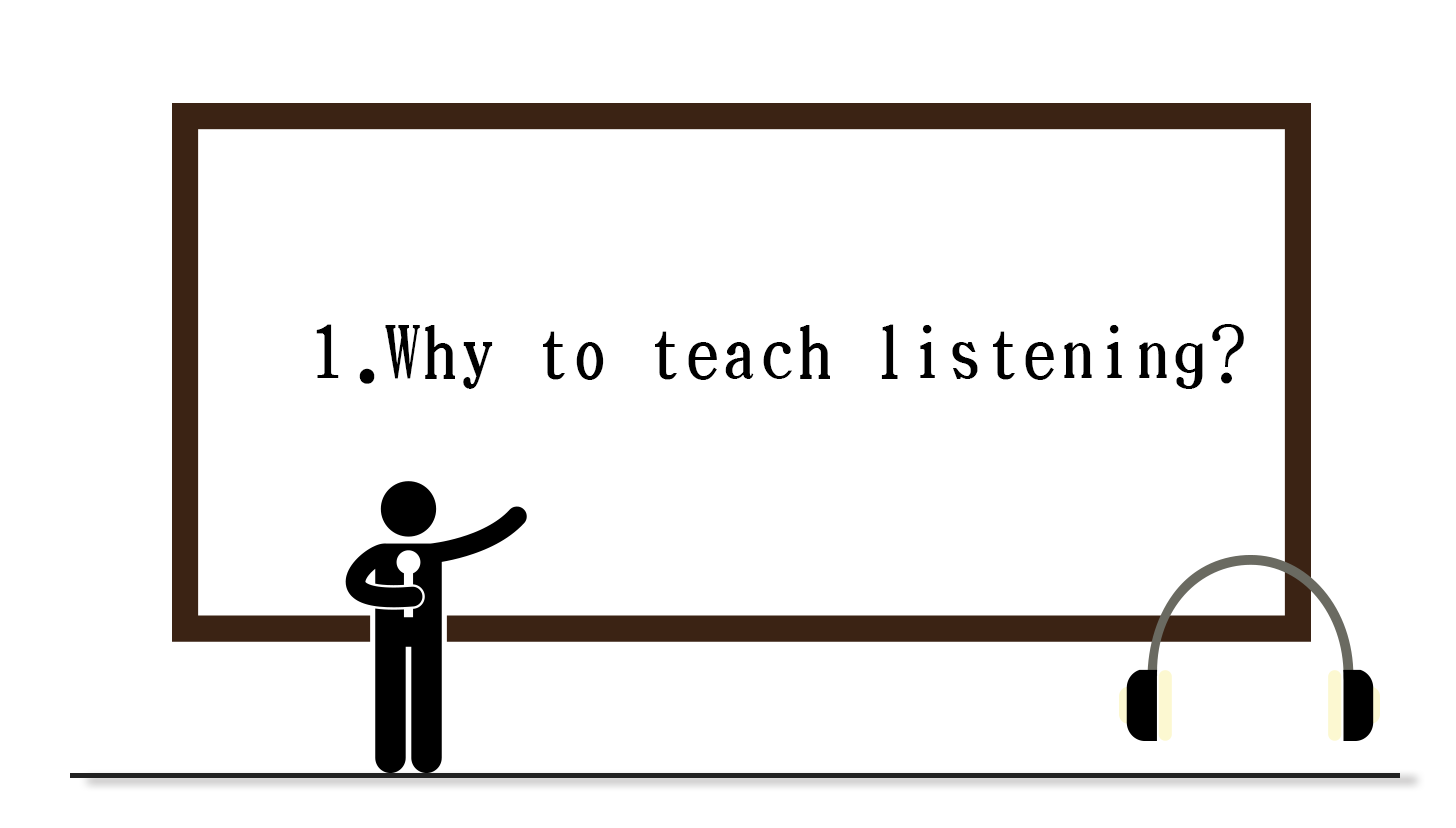
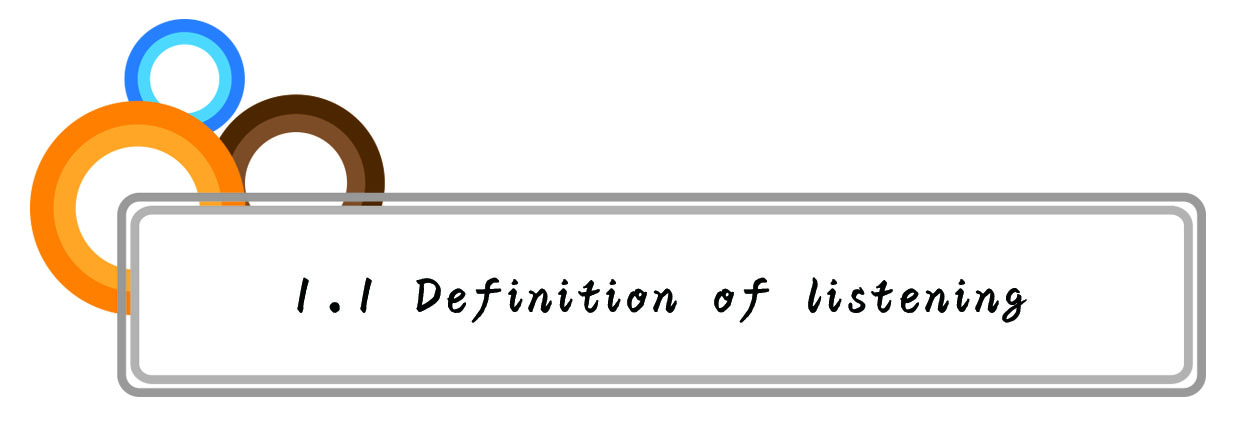
Listening is used in language teaching to refer to a complex process that allows us to understand spoken language. Listening is an active, purposeful process of making sense of what we hear.
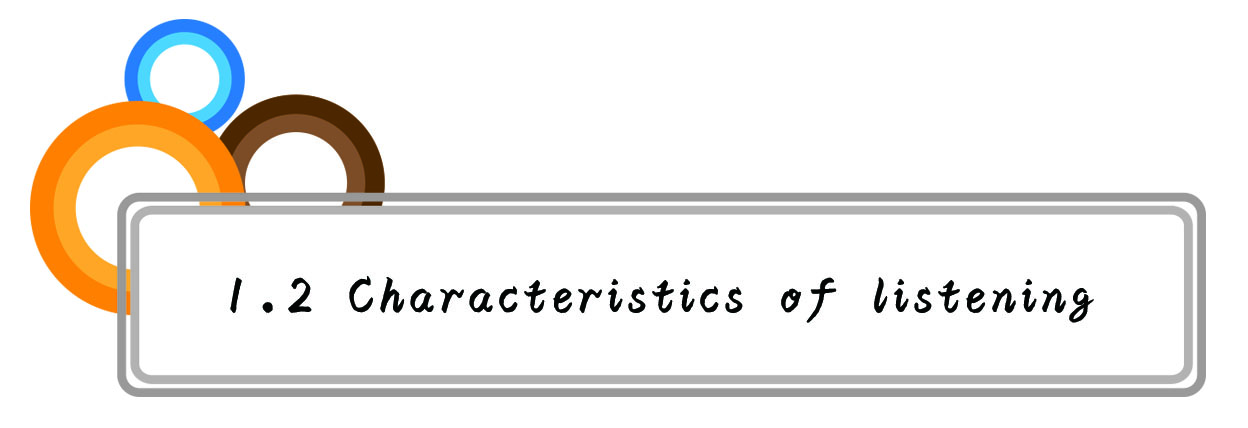
(1) The process of understanding the text—content of the text matches up to these predictions (lead-in stage/pre-listening);
(2) Extraction specific information;
(3) Getting the main points of the text (1st purpose);
(4) Extracting detailed information;
(5) Recognizing function and discourse patterns;
(6) Deducing unfamiliar words meaning from context;
(7) Other special features, e.g.
- Go with the speed of the voice(s) they are listening to (general understanding first, not pick out details immediately);
- Incomplete utterances (e.g. ‘Dinner?’= ‘Is dinner ready?’)
- Repetitions (e.g. I’m absolutely sure, you know that she’s right’.)
- Hesitations (e.g.Yes, well, ummm, yes, possibly, but, er…’)
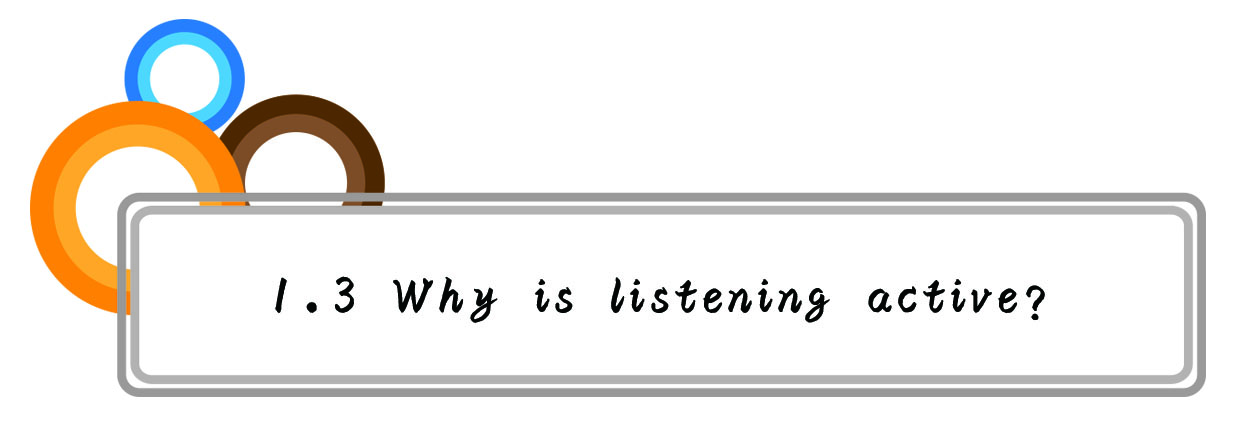
Listening, along with reading, is a receptive skill. That is, it requires a person to receive and understand incoming information (input). Listening is very active. As people listen, they process not only what they hear but also connect it to other information they already know. Among those sources are knowledge of language, of what has already been said, of context, and general background knowledge. When we listen, we are normally doing so for a purpose. We don’t listen to words, we listen to the meaning behind the words.
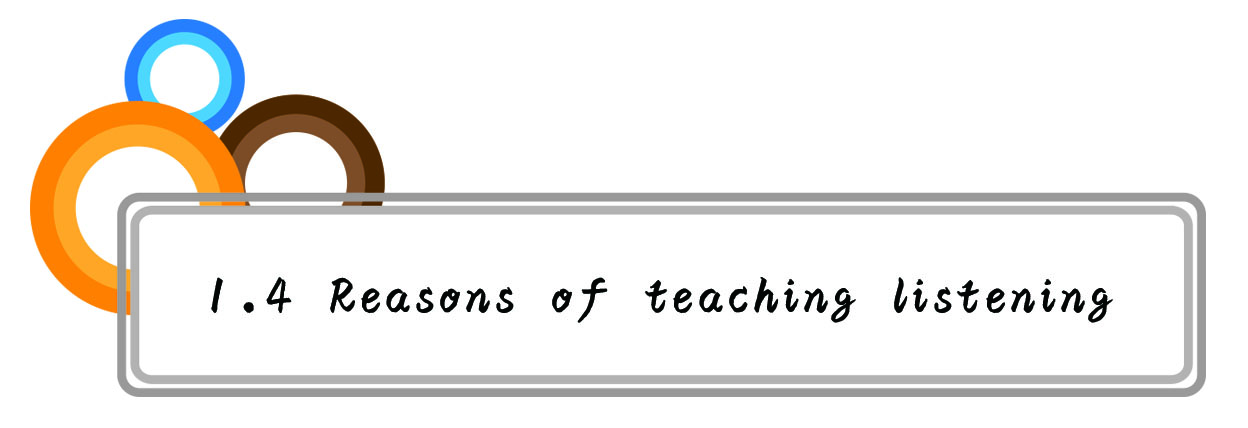
(1) To hear different varieties & accents in the pronunciation of sounds & in grammar
—British/American/Australian/Caribbean/Indian/West African English
(2) To acquire language subconsciously and get vital information about grammar, vocabulary, pronunciation, rhythm, intonation, pitch and stress.
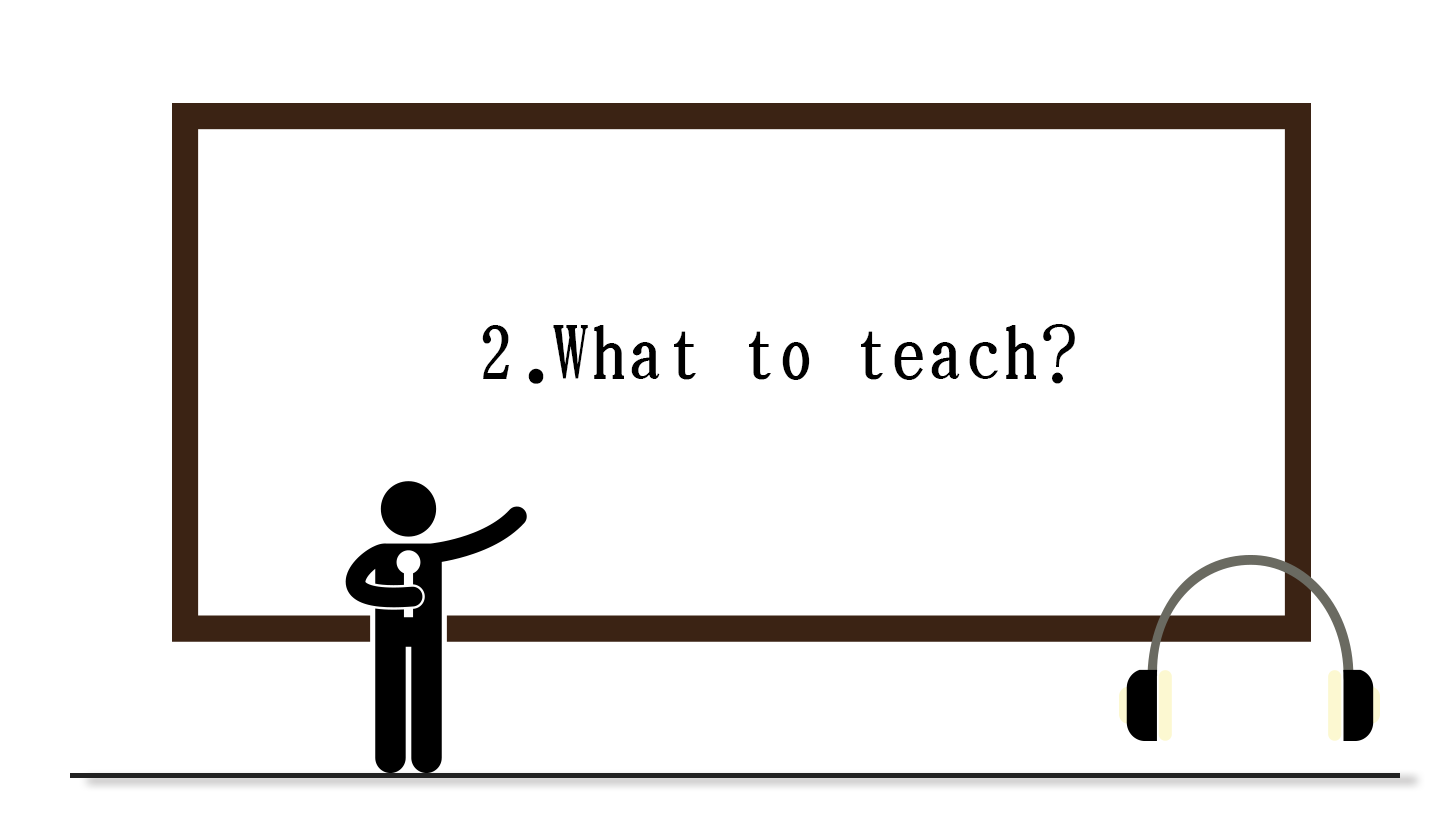
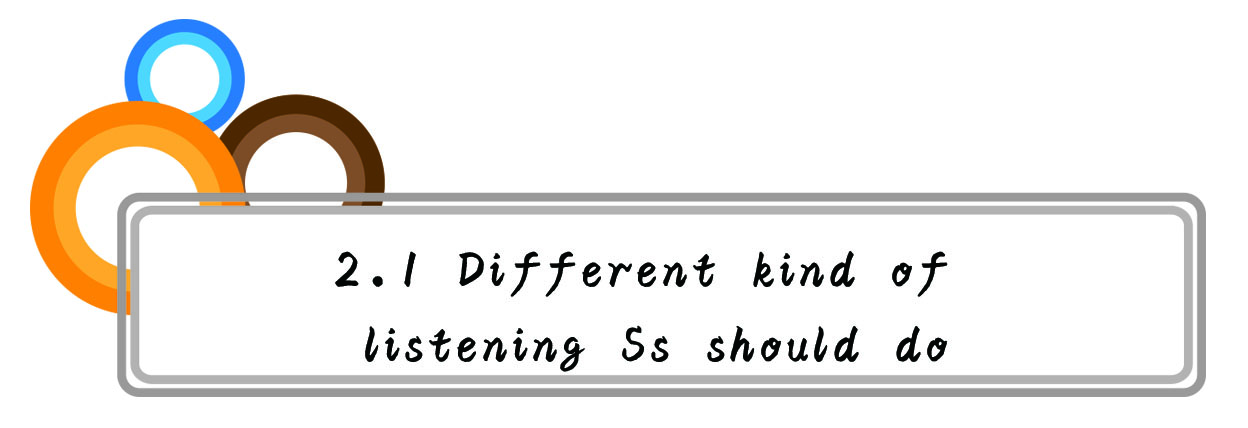
Different kinds of realistic tape to Ss , e.g.
announcements,
conversations,
telephone exchanges,
lectures, ‘plays’,
news broadcasts,
interviews,
other radio programs,
stories read aloud, etc.

There are 4 classes of “active listening”:
(1) Global listening to focus on meaning;
(2) Intensive listening to focus on form;
(3) Selective listening to focus on specific outcomes; and
(4) Interactive listening to focus on strategy development.
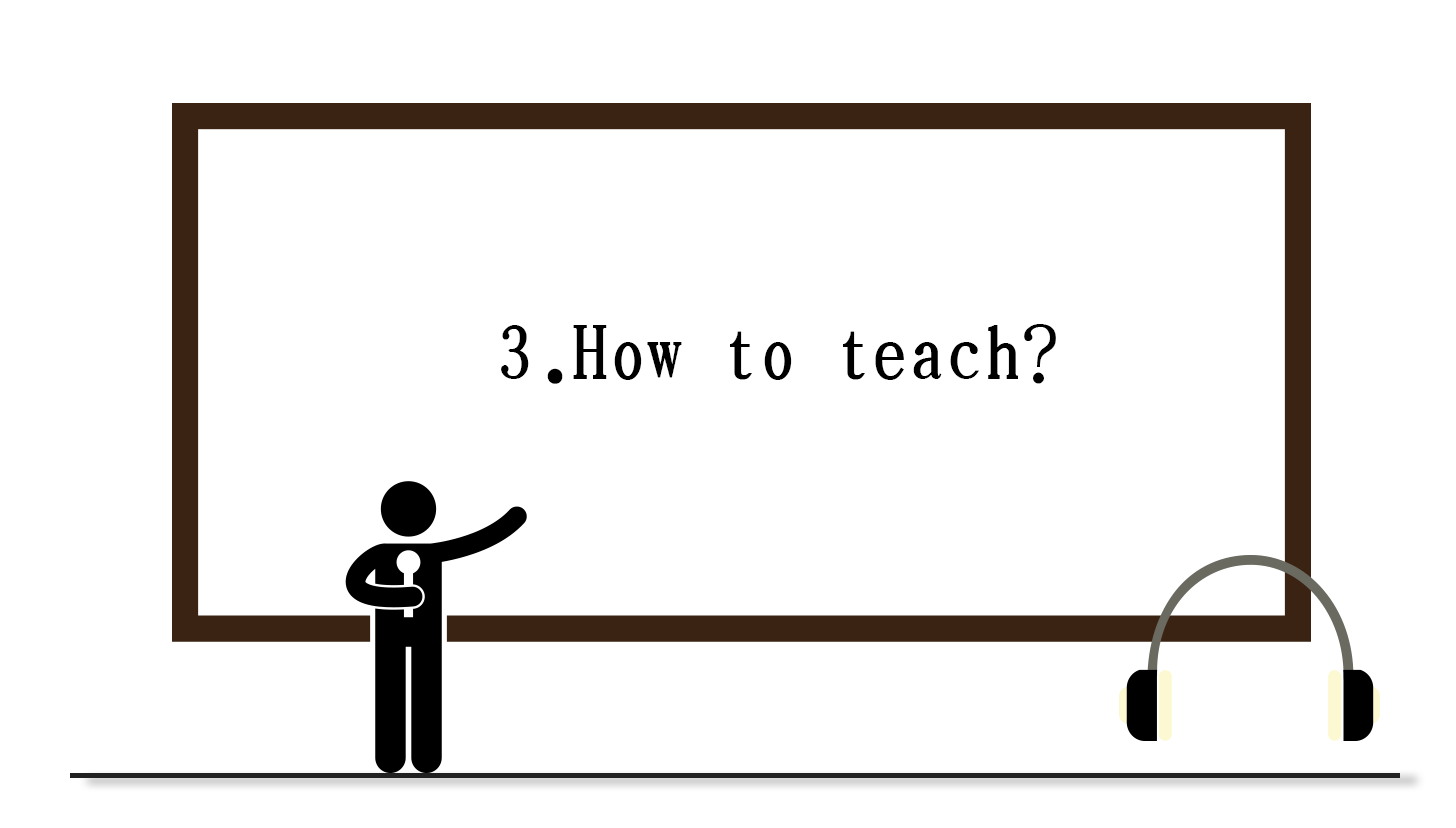
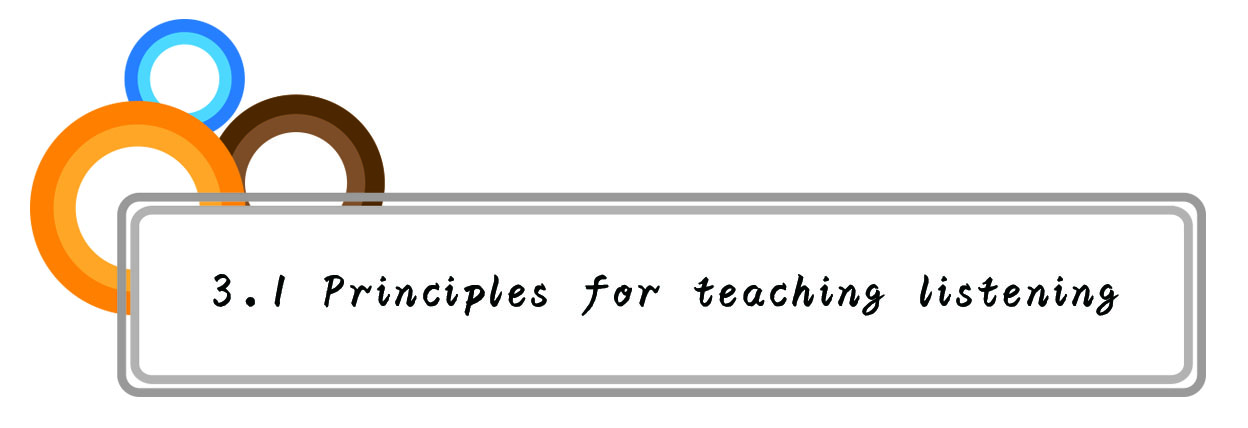
(1) Expose students to different ways of processing information: bottom-up vs. top-down. With bottom-up processing, students start with the component parts: words, grammar, and the like. Top-down processing is the opposite. Learners start from their background knowledge, either content schema (general information based on previous learning and life experience) or textual schema (awareness of the kinds of information used in a given situation.
(2) Expose students to different types of listening. Once will not be enough. The most common type of listening exercise in many textbooks is listening for specific information. Sometimes, students try to understand in a more general way which is global or gist listening. Another critical type of listening is inference. This is “listening between the lines—listening for meaning that is implied but not stated directly. Because inference requires somewhat abstract thinking, it is a higher level skill.
(3) Teach a variety of tasks. Since learners do the tasks as they listen, it is important that the task itself doesn’t demand too much production of the learner. At times, students need experience with production tasks. And also, different listening stages demand different listening tasks.
(4) Consider text, difficulty, and authenticity. Don’t give them unnaturally slow, clear recordings. The task and input are two aspects of authenticity.
(5) Teach listening strategies. Following strategies are used by successful listeners: predicting; inferring; monitoring; clarifying; responding; evaluating. Good teachers exploit listening texts to the full in order to improve different levels of thinking ability.
(6) Combine listening and speaking. A balance of listening and speaking activities can be important to maintain learner engagement. Students should be encouraged to respond to the content of a listening, not just to the language. Therefore, the teacher should not just play the tape and check the answer.
(7) Preparation is vital. The tape recorder is just as important as the tape.
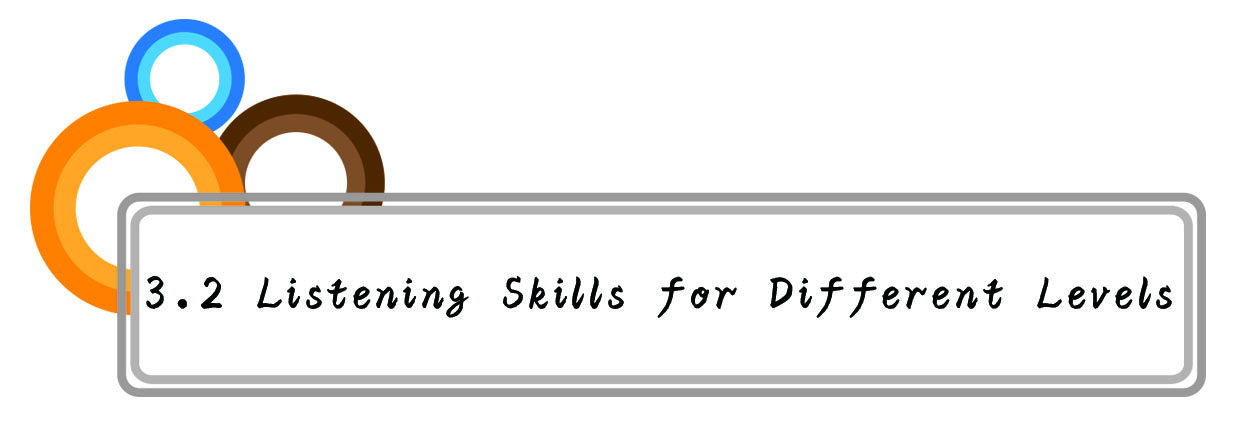

(1) To use contextual clues to deduce word meanings
(2) To make inferences and to get information
(3) To understand instructions and follow directions
(4) To understand familiar speeches or talks at a slow to normal rate
(5) To get the central idea(s) or the main theme and make appropriate reflections
(6) To distinguish main ideas from supporting ones and to grasp details
(7) To comprehend the development of the plot and the function of cause and effect in a story
(8) To understand relevant English programs on radio, TV and videos

(1) To abstract information from relevant speeches, discussions, arguments and reports
(2) To distinguish facts and opinions and relate facts with the information that you want to have
(3) To infer the meanings of new idioms or set phrases
(4) To be able to determine speaker’s mood, attitude and feeling
(5) To adjust to the speaker’s voice, accent and style

Q1: Is listening a passive skill? Why or why not?
Q2: What are the differences between listening and reading?
Q3: Why should we integrate listening to speaking?
Q4: Why should we combine bottom-up and top-down processing?


















